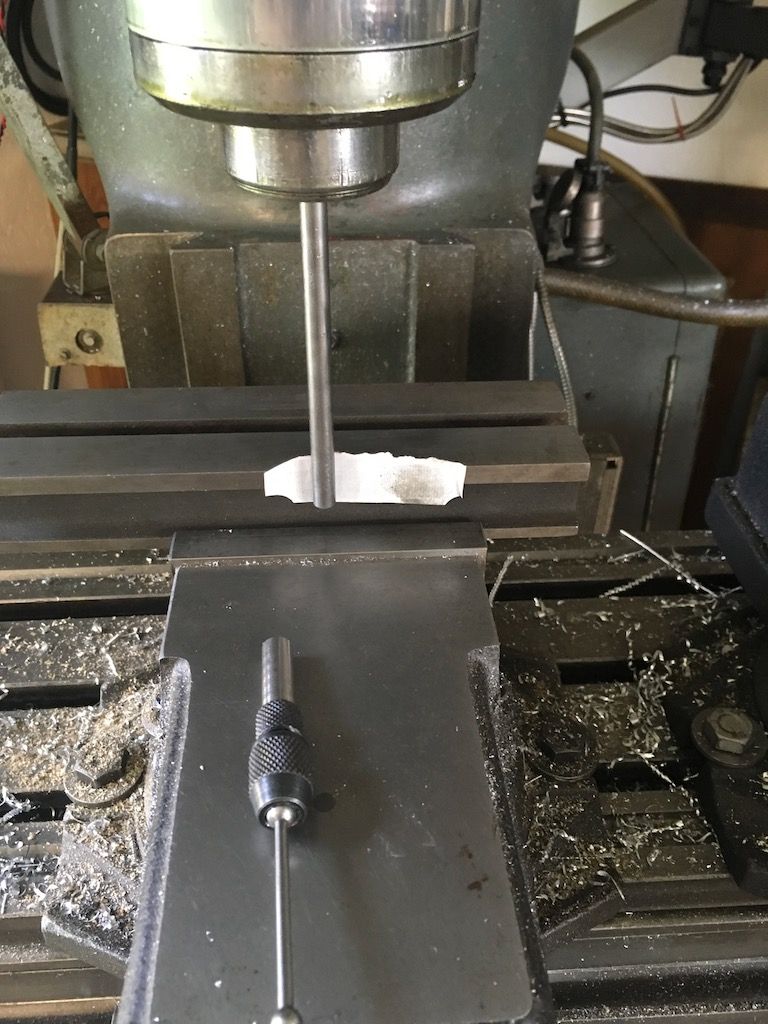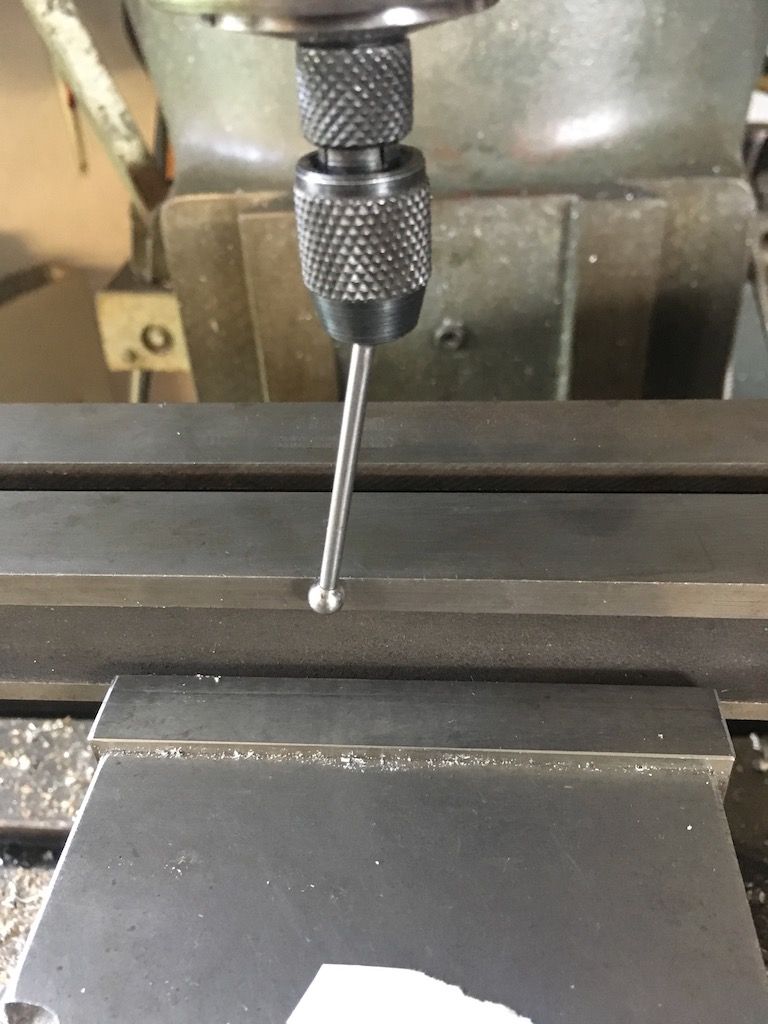Brian
After struggling with the offset variability on my collet holder set I calibrated it by trapping a one thou feeler gauge against an accurately vertical face with a dead straight silver steel rod of same diameter as the ball. After a bit of practice I could repeatably locate where the feeler gauge was just trapped enough to have some resistance to being pulled out. Watching the dials and recording the scatter gave me a good education in just how small a thou' is and just how much we take feed screw accuracy for granted.
Reference was probably the edge of my old Brown & Sharpe T slotted indicator carrier which has a nice 1/4" (ish) deep ridge each side decently clear from the main body but I really don't recall what I used. Long time ago.
So the calibration gave me the spindle centre line offset as half the rod (ball) diameter plus one thou. As I recall it first effort with the set gave a rather variable stiction error of around ten thou'. With a bit of playing around I think I got it down to a reliable 5 thou or so when simply assembling the thing. If I wanted to take extra trouble I think I could get a reliable 2 or 3 thou offset out of it.
Which is why I suggest that if you intend to make serious use of one you should take the time to get it working just so and leave it assembled.
Obviously these devices can never be intrinsically super precise. Although as with everything mechanical "Inspector Meticulous" types taking their time can do better than book.
The instruction leaflet for the much more expensive Huffam device with its intrinsically far lower friction and much smaller stiction offset, only claims it to to be useful "in the vast majority of cases where an accuracy of the order of 1 thou is sufficient and a jig borer is not available". The leaflet goes on to say that an unskilled operator "should be able to locate the relationship between the machine spindle centre line and datum face to within half a thou by the run off method and to within two tenths of a thou by the line of light method". Which I find fair comment but said unskilled operator needs a bit of practice to get the hang of things and to be fairly careful type to boot.
If I roll up my sleeves and concentrate I'd reckon to halve those values on a reasonable day.
Line of light method won't work with a collet type. They are just too stiff. Even with a Huffam its fairly frustrating at the best of times.
If you have a decent DRO system then working off opposite sides of the workpiece and using the centre finding function is a much better way of going about things as you only need consistent, albeit still small, stiction offset. The error cancels. I've never bothered to really test a collet based system used like this but I'm confident that within one thou accuracy is perfectly reasonable expectation if its sensibly assembled for smooth, easy movement. I did try my imperial Huffam against a 3" gauge block and, with care, the results are approaching unreal. Almost certainly better than you can easily measure with vernier or micrometer. Pretty much down to ± a single last digit shift on my Sino DRO and I'm unsure that is trustworthy right down there.
Out in the real world I'm confident that my Huffams get me to within a thou single sided. Once you get below a thou there are so many other potential sources of small errors that life is just to short to worry unless it has to be precise.
Clive
Edited By Clive Foster on 20/07/2019 20:43:57
Edited By Clive Foster on 20/07/2019 20:44:33
lfoggy.






